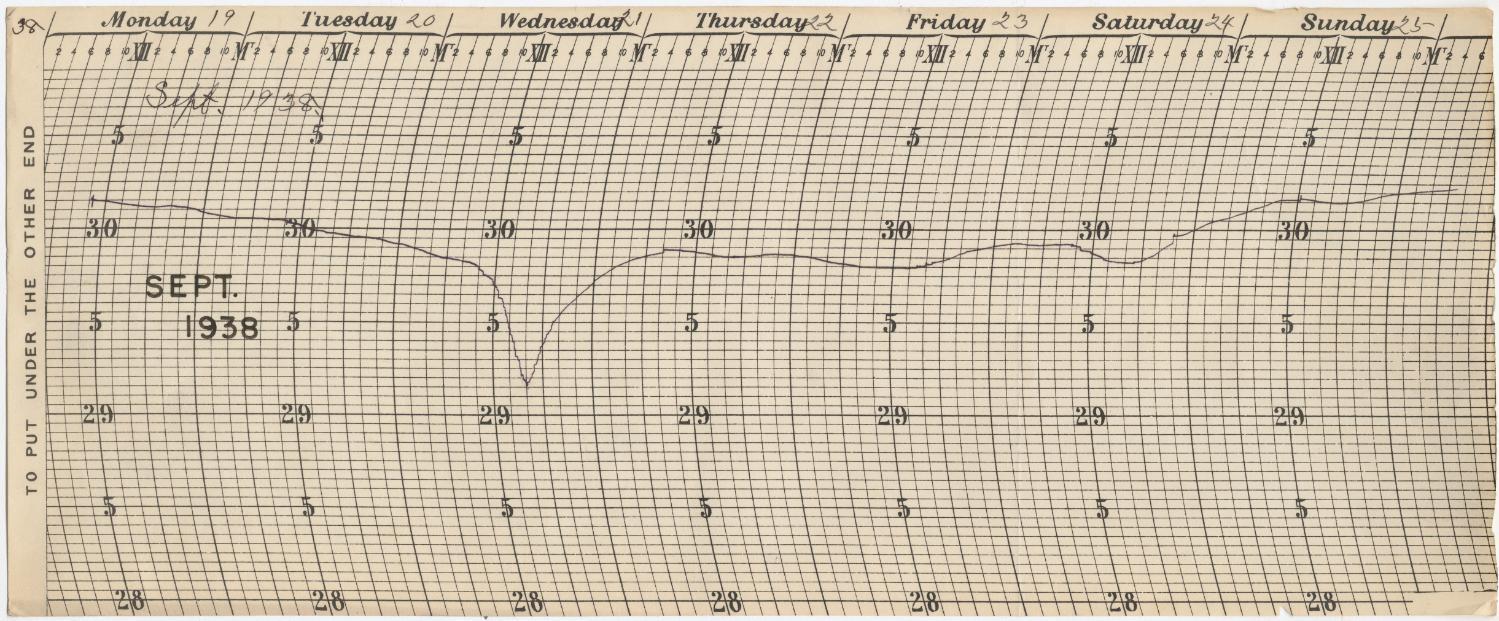While many of the items we photograph are done in our studio, we do occasionally need to photograph items or objects where they reside at Brown. This is usually due to their size or other constraints that makes moving them too difficult. It then gives us the challenge to both light the object as well as safely maneuver ourselves and our equipment in a variety of spaces.
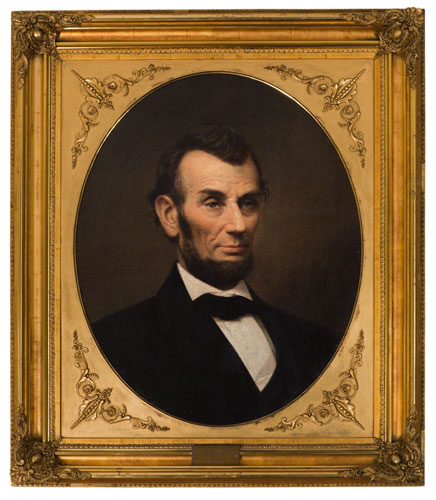
This is exactly what happened when I photographed this portrait of Abraham Lincoln by Peter Baumgras. Part of the Charles Woodberry McLellan Collection of Lincolniana at Brown, the portrait is housed in the Lincoln room at the John Hay Library. Beautifully framed, it’s a lovely portrait to shoot.
But it’s hung very high on the wall, at a significant angle, without a lot of space to photograph it without distortion. In came our portable lighting setup, our D-SLR (Canon 5D Mark II with 85mm f1.2 L series lens) and tripod, and Macbook Pro (for shooting tethered into Adobe Lightroom).
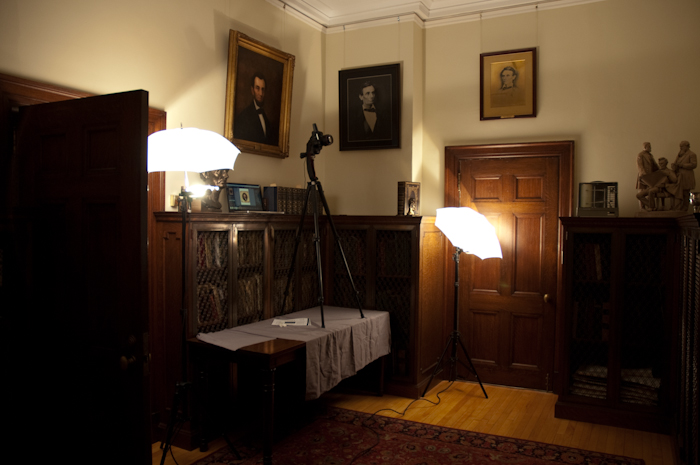
While the painting itself is opposite the camera (naturally), you get a good idea of my setup here — you also get a pretty good idea regarding why this is referred to as the “Lincoln room.” Due to the height at which the portrait is hung, I had to actually put my tripod up on a table next to the bookcases. I have two hot lights (tungsten-based) with shoot-through umbrellas, which allowed me to light the entire space without lighting the painting too directly. (The painting has glossy oil paint and a highly reflective frame, so keeping reflections to a minimum was essential.)
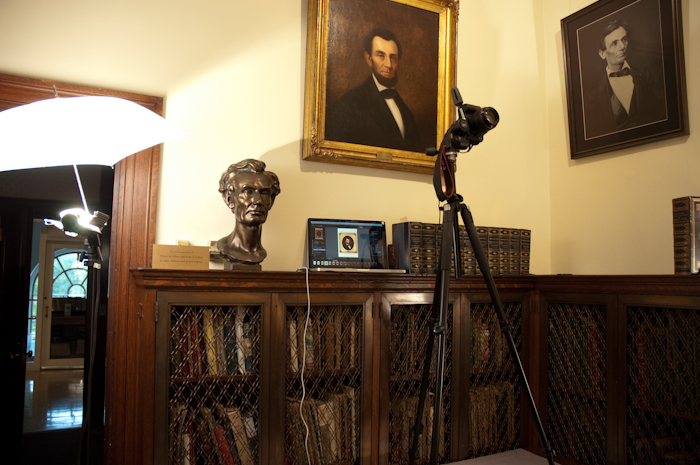 A closer shot of the setup shows the camera at an angle. This is not just because the painting is so high – yes, it’s way too high to shoot straight on with the camera, but it also leans forward off the wall by a few inches. It’s not a steep pitch, but enough that it’s easy to get an image that’s just not quite square (i.e. unacceptable).
A closer shot of the setup shows the camera at an angle. This is not just because the painting is so high – yes, it’s way too high to shoot straight on with the camera, but it also leans forward off the wall by a few inches. It’s not a steep pitch, but enough that it’s easy to get an image that’s just not quite square (i.e. unacceptable).
You can also easily see here that I have the camera hooked up to a laptop for tethered shooting. This allowed me to check the focus, the angle of the camera, the white balance and the exposure all while shooting so I knew I had a usable shot before I packed everything up.
What you can’t see as easily in this shot is that I had to bracket, and ended up using two different exposures, combined into one, for the final image. I used one darker exposure for the bright frame, and a lighter exposure for the portrait itself, which has subtly textured shadows that I wanted to show. In Photoshop, I carefully made a path around the actual painting, and masked out the darker frame. Layered atop the brighter frame, we get the final image, which exposes correctly for both elements of the object.
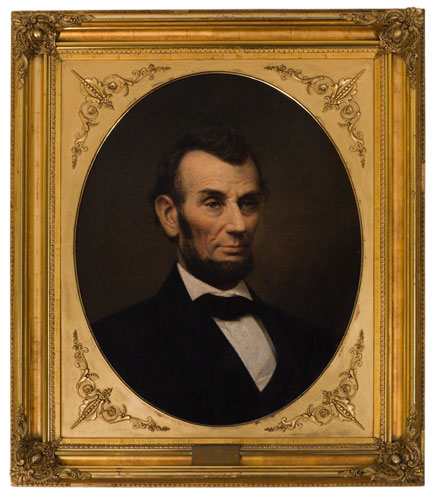
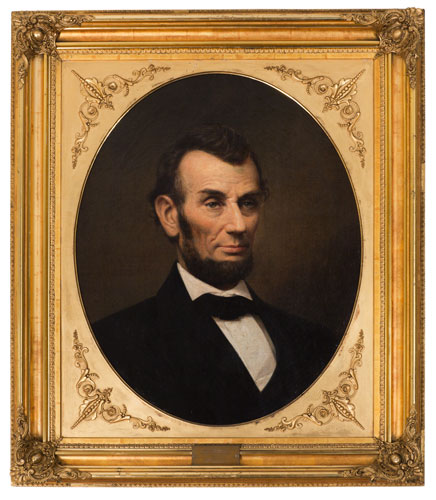
1. Dark image, exposed correctly for the frame. 2. Light image, exposed correctly for the painting. 3. Detail of layered image, showing detailing in the frame and the painting.



